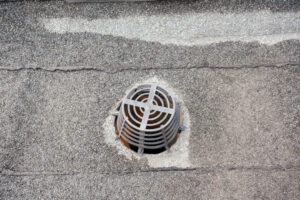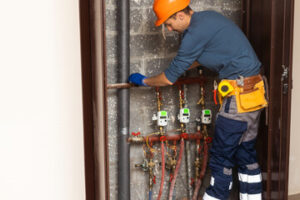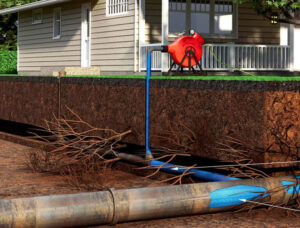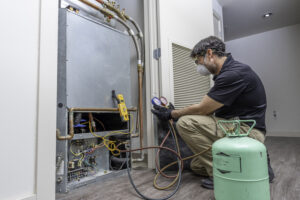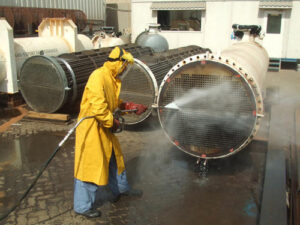It’s important to find a plumber you can trust. But, how do you choose one?
You can ask friends and neighbors for referrals. Remodeling contractors and real estate agents also may have a list of trustworthy, fast-response Plumber Roswell. You can also search online for reviews and ratings. However, price should not be the only determining factor.

Ask For Referrals
You may think it’s obvious, but asking friends and family who they use for plumbing can be a great way to find a plumber you can trust. Word-of-mouth recommendations carry more weight than a hyped-up online advertisement. If someone says they had an issue and their plumber was professional, helpful, and fair, this is a good sign that you’ll be in safe hands.
If you can’t find any personal recommendations, look for a plumber in your local area on tradesperson review sites. You can also try finding a plumber that’s listed on a recognized trade association website, as these will be vetted and have a code of practice to uphold.
While it’s tempting to go with the cheapest option, don’t be fooled by falsely cheap prices – when it comes to a skilled job such as plumbing, you get what you pay for. Choosing a plumber who charges slightly more but offers top-quality service can save you money in the long run, as they’re likely to be able to solve your problem quickly and efficiently.
You can also ask for recommendations from other tradespeople, such as electricians and builders who have worked on your property in the past. Tradespeople often work together and know each other, so they’re more than happy to pass on the names of reliable colleagues. Not only is this a good indicator of a plumber’s quality, but it can also help you avoid cowboy tradespeople who aren’t reputable or insured.
When choosing a plumber, you should always compare their rates and services with other plumbers in your area. You’ll usually find that a reputable plumber will provide a detailed quote for the work to be carried out, including parts and labor. In addition, they will be able to tell you how long the job should take and give you an upfront price.
You should also choose a plumber who is licensed and insured, and you can usually verify this information on your state’s government website. Another important factor is their customer service, and you should be able to gauge this from the initial phone call. If a plumber sounds rude or unprofessional, it’s best to move on to the next candidate.
Check Online Reviews
You may find yourself in a bit of a dilemma when deciding on a plumber for your home. On one hand, you want to make sure that the plumbing professional you choose is reputable and will do good work at an affordable price. On the other hand, you want to avoid getting ripped off or wasting your money on an inexperienced plumber.
This is why checking online reviews is so important. While it is tempting to just search the names of local plumbers and pick the first one that pops up, this can end up backfiring on you. Instead, take the time to check online reviews and customer satisfaction ratings for several different plumbers in your area.
The best place to start when looking for online reviews is online. Many people will read these before hiring a contractor, so you must have an excellent online review score. This can be achieved by claiming your business on GMB and posting a link to your online reviews on your website and social media pages. It is also a good idea to ask for a review from each of your clients after they complete the job. This can be done easily by giving each client a card with a review site URL that they can visit to leave their feedback.
Another way to get online reviews is by asking other professionals for recommendations. If you know a handyman or electrician who has worked on your home in the past, then ask them to recommend a plumber that they trust. In addition, you can always check with the Better Business Bureau or other business organizations to see if any complaints have been filed against a particular plumber.
When it comes to finding a great plumber, word of mouth and referrals are still the most trusted sources. However, with so much information available online, it is easier than ever to check the credentials of potential plumbers before hiring them for a project. By following the tips above, you can be sure that the plumbing professional you choose will be reputable, affordable, and qualified to perform the work that you need completed.
Check For Licensing
When choosing a plumber, you want to make sure that they are licensed and insured. This ensures that they have the necessary credentials to do the job properly, and it also protects you from any mishaps or damages that may occur during the work. You can check a plumber’s licensing information online, or you can call the state plumbing board to see if they are licensed.
It’s also important to ask a plumber about their rates. Some plumbers charge by the hour, while others have flat rates for certain services. Make sure you know what the rates are before hiring them to make sure you’re not surprised by any hidden fees. Also, be sure to find out if they have a one-time service fee or if it’s an ongoing fee. This will help you decide whether they are worth the cost or not.
Most plumbing companies will send out multiple plumbers to your home for estimates or to carry out the work, so it’s important to check that they are licensed and insured. It’s also helpful to find out if they have any additional qualifications, such as training or certifications. You should also ask if they offer a written guarantee on their work, as this will give you peace of mind knowing that the job will be done correctly.
Lastly, it’s always a good idea to ask a plumber for references from previous clients. This will give you a good idea of their work ethic and whether or not they are someone you can trust. You can also ask these past clients questions about their experience with the plumber, such as how they handled unexpected problems or if they were upfront about the costs. This will help you determine if they are the right fit for your home. And if they aren’t, you can move on to the next potential plumbing company.
Check For Insurance
Few things send homeowners into a frenzy like a leaky faucet, a clogged toilet, or an overflowing dishwasher. When these problems occur, it’s essential to have a reliable plumber on call to respond quickly and get the problem under control before the situation gets worse. Fortunately, finding a good plumber doesn’t have to be a chore. By following a few simple tips, you can be sure to hire an experienced, qualified professional who will provide excellent service.
The best way to find a quality plumber is to ask for recommendations from friends and family members. However, if you don’t know anyone who can recommend a plumber, try searching for one online. Many directories list local plumbers and their reviews. Look for verified reviews that have been written by real customers rather than by the company itself.
Once you’ve found a few potential plumbers, it’s important to check their licenses and insurance. This will help to ensure that they are legitimate professionals and not “cowboys” who might take your money and run. A reputable plumber will be more than happy to provide you with proof of their licensing and insurance, so don’t hesitate to ask.
Another thing to look for is a plumber who is certified by the National Association of Plumbing-Heating-Cooling Contractors (NAPHCC). This certification ensures that the plumber has undergone extensive training and has passed an exam. It also means that they have undergone a criminal background check and are up to date on all the latest industry trends and safety practices.
It’s also worth checking whether a plumber has public liability insurance. This will protect you in case the plumber damages your property while working on a job. In addition, it’s a good idea to check whether the plumber has general business insurance, which covers any damages or injuries sustained by their employees while on the job.
Finally, when choosing a plumber, be sure to compare quotes before hiring. You may be tempted to hire the cheapest plumber, but this can often end up costing you more in the long run. A reputable plumber will be honest and upfront about the costs of the job, so you won’t be surprised by any unexpected charges down the road.
